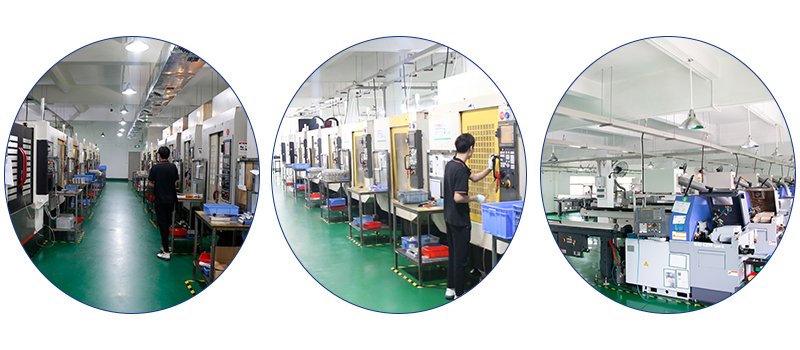When it comes to CNC machining, designing for manufacturability is crucial. As someone who’s spent years navigating the complexities of machining processes, I can tell you that even small design adjustments can significantly impact production efficiency, quality, and cost. Let’s dive into the fundamentals of designing for CNC machining and explore actionable tips to ensure your parts are optimized for manufacturing success.
Understanding the Basics of CNC Machining
Before we talk about design, let’s establish a clear understanding of CNC machining. CNC, or Computer Numerical Control, involves using automated tools to remove material from a workpiece to create precise, custom parts. It’s a highly versatile method, capable of handling a wide range of materials like metals, plastics, and composites. But here’s the catch: the efficiency and success of CNC machining rely heavily on your design.
Have you ever wondered why some designs lead to costly production delays or frequent quality issues? The secret often lies in the details of the design itself.
Why Design for CNC Machining Matters
Designing for manufacturability is about creating parts that are not only functional but also easy to produce. Poorly optimized designs can lead to:
- Higher production costs
- Increased machining time
- Quality defects
- Material wastage
On the flip side, an optimized design minimizes these issues and ensures smooth production. So, how do you get started? Let’s explore the key principles of CNC machining design.
Key Principles of CNC Machining Design
1. Choose Materials Wisely
The choice of material impacts everything from machinability to surface finish. Metals like aluminum and stainless steel are CNC-friendly, while harder materials like titanium may require specialized tools and longer machining times.
Pro Tip: When in doubt, consult your machining partner for material recommendations. At YL-Machining, we help clients select materials that balance performance and cost.
2. Keep Tolerances Realistic
While CNC machines can achieve tight tolerances, specifying overly precise dimensions can increase costs unnecessarily. For non-critical features, aim for tolerances around ±0.1 mm.
Think of it this way: tighter tolerances require slower machining and additional quality checks. Do you really need that level of precision for every feature?
3. Design with Tool Access in Mind
CNC tools need sufficient access to machine features like holes, slots, and pockets. Complex geometries can lead to increased setup times or even make certain features impossible to machine.
Tip: Use fillets with a radius equal to or greater than the cutting tool’s radius to ensure smooth transitions. Avoid sharp internal corners unless absolutely necessary.
4. Limit Depth-to-Diameter Ratios
For deep holes or pockets, maintaining an appropriate depth-to-diameter ratio is critical. A good rule of thumb is to keep the ratio below 4:1. Exceeding this can lead to tool deflection, vibration, and poor surface quality.
5. Optimize Part Orientation
Consider how your part will be positioned during machining. Minimizing the number of setups can reduce production time and costs. Features that require multiple orientations can complicate machining and introduce alignment errors.
Common Design Mistakes to Avoid
1. Overcomplicating the Geometry
While CNC machines are powerful, overly complex designs can slow down production. Simplify wherever possible without compromising functionality.
2. Ignoring Standard Sizes
Using non-standard hole diameters or thread sizes can lead to increased tooling costs. Stick to industry-standard dimensions whenever possible.
3. Failing to Consider Post-Processing
If your design requires surface treatments like anodizing or polishing, factor this into the initial design. For instance, tight tolerances may change slightly after anodizing due to the added material thickness.
Advanced Tips for Optimizing Your CNC Design
1. Consolidate Parts
Instead of designing multiple components, explore ways to consolidate features into a single part. This reduces assembly time and improves overall strength.
2. Leverage CAD and CAM Tools
Modern CAD (Computer-Aided Design) and CAM (Computer-Aided Manufacturing) software can simulate machining processes and highlight potential issues before production begins. Take advantage of these tools to refine your design.
3. Collaborate with Your Machining Partner
Early collaboration with your CNC manufacturer can help identify potential challenges and save time. At YL-Machining, we often work with clients during the design phase to ensure their parts are fully optimized for CNC machining.
How YL-Machining Can Help
At YL-Machining, we specialize in helping clients bring their designs to life through precision CNC machining. Whether you’re developing prototypes or scaling up for mass production, our team is here to provide expert guidance every step of the way.
Final Thoughts
Designing for CNC machining doesn’t have to be overwhelming. By understanding the basics and applying the principles outlined here, you can create parts that are not only functional but also efficient to manufacture.
So, the next time you’re working on a design, ask yourself: Am I making this easy to machine? If you need help optimizing your design, don’t hesitate to reach out to us at YL-Machining. Together, we can turn your ideas into precision-engineered reality.






